Industrial steam boilers are essential for heating, power generation, and process applications across a wide range of industries—from food production to chemical processing. However, investing in a steam boiler is not just about the equipment price. Many operations underestimate long-term operational, maintenance, and energy costs, leading to budget overruns and reduced ROI. A thorough understanding of both upfront and lifecycle costs is crucial for making an informed purchasing decision.
The upfront costs of an industrial steam boiler include the purchase of the boiler unit, installation, piping, insulation, water treatment systems, and permits. Long-term costs include fuel or energy consumption, ongoing maintenance, blowdown losses, emissions compliance, water treatment, operator labor, and periodic equipment upgrades or replacements. While initial capital expenditures are significant, it’s often the operational costs—especially fuel—that account for the largest portion of total cost of ownership (TCO) over the boiler’s 15–30 year lifespan.
Here’s a detailed breakdown of the cost components to consider when budgeting for a steam boiler system.
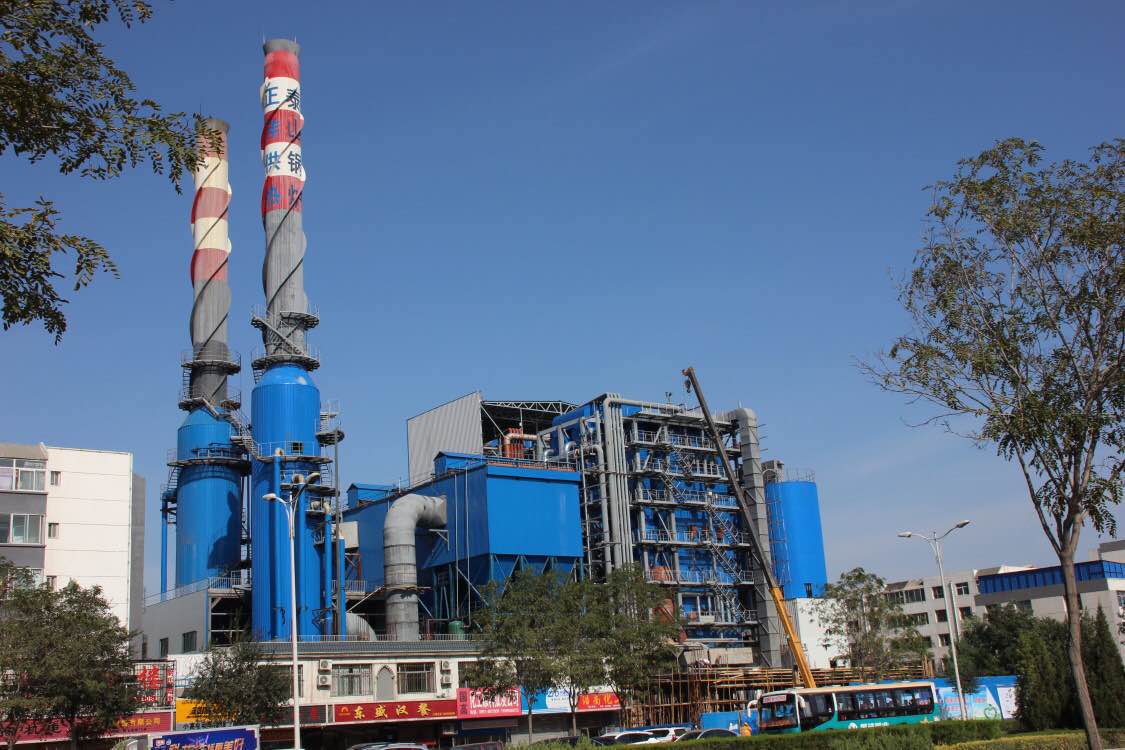
What Are the Typical Upfront Capital Costs for a New Industrial Steam Boiler System?
Purchasing a new industrial steam boiler is a major capital investment—one that affects not only thermal performance but long-term operating expenses, compliance, and safety. However, many buyers initially overlook the full scope of upfront costs, focusing solely on the boiler unit’s price. In reality, the total capital expenditure (CAPEX) includes everything required to install, connect, and commission the boiler system, such as auxiliary equipment, site preparation, engineering, and regulatory permitting. Understanding these components in detail is crucial for accurate project budgeting and investment justification.
Typical upfront capital costs for a new industrial steam boiler system range from $200,000 to over $2 million depending on capacity, pressure rating, fuel type, automation level, and included system components. These costs include the boiler unit itself, burners, control systems, feedwater equipment, blowdown systems, piping, installation, commissioning, and permits. On average, turnkey installation costs are 2 to 3 times the bare equipment cost. Accurate budgeting requires factoring in engineering, foundations, electrical, and environmental compliance costs.
The unit cost is only half the story—what surrounds the boiler often doubles the budget.
The total installed cost of an industrial steam boiler system is typically 2 to 3 times the price of the boiler unit alone.True
Costs for installation, piping, auxiliary equipment, and permitting add significantly to base boiler cost.
📦 Typical Capital Cost Breakdown
| Cost Category | % of Total CAPEX | Description |
|---|---|---|
| Boiler Unit (Shell & Tube) | 30–40% | Main steam generation equipment |
| Burner & Fuel Train | 10–15% | Matched for fuel type, emissions, turndown |
| Boiler Controls (PLC/DCS/SCADA) | 5–10% | Touchscreen, safety interlocks, AFR control |
| Feedwater Equipment (Pumps, Tanks, Softener) | 8–12% | Boiler feed, deaeration, treatment |
| Blowdown System & Piping | 3–6% | Surface/intermittent blowdown tanks and piping |
| Stack, Chimney, and Draft Fans | 3–7% | Flue gas discharge and air supply |
| Installation & Mechanical Labor | 15–25% | Assembly, insulation, rigging |
| Electrical & Controls Integration | 5–8% | Wiring, sensor loops, power supply |
| Site Prep & Foundations | 2–5% | Civil work, concrete pads, access platforms |
| Commissioning & Permitting | 2–4% | Startup, test-firing, code inspection |
Depending on complexity, boiler installation labor alone can exceed $200,000.
📊 Example: Mid-Range Oil-Fired Boiler (10 TPH, 10 barg)
| Cost Component | Estimated Cost (USD) |
|---|---|
| Boiler Unit (oil-fired, 3-pass design) | $280,000 – $350,000 |
| Burner, fuel train, safety shutoffs | $70,000 – $100,000 |
| Controls (touchscreen + PLC) | $35,000 – $60,000 |
| Feedwater system & deaerator | $60,000 – $90,000 |
| Installation (rigging, plumbing, labor) | $150,000 – $220,000 |
| Electrical work | $40,000 – $60,000 |
| Stack, ducts, dampers | $30,000 – $50,000 |
| Permits, commissioning, inspections | $20,000 – $40,000 |
| Total Turnkey Cost | ~$700,000 – $1.0 million |
This range covers complete delivery to a ready-to-operate state with local code compliance.
🧪 Scale-Based Boiler Cost Estimates
| Boiler Size (Steam Output) | Typical Installed Cost (USD) | Notes |
|---|---|---|
| 2 TPH | $250,000 – $450,000 | Small industrial or backup use |
| 5 TPH | $400,000 – $700,000 | Mid-sized plant, batch ops |
| 10 TPH | $700,000 – $1.0 million | Standard continuous process |
| 20 TPH | $1.2M – $1.8 million | Large industrial demand |
| 30 TPH | $1.6M – $2.4 million | Powerhouse-grade system |
Final cost depends on fuel system complexity, emissions controls, and local labor market.
📋 Key Factors That Influence Capital Cost
| Factor | Influence on Cost |
|---|---|
| Fuel Type (Oil vs. Gas vs. Dual) | Oil requires more safety components |
| Pressure & Temperature Rating | Higher ratings = thicker walls, more steel |
| Emission Control Requirements | SCR, FGR, or CEMS add $100K–$300K+ |
| Automation Level | Manual vs. fully automated PLC |
| Construction Environment | Urban vs. rural, confined access |
| Shipping & Import Duties | Especially for international projects |
Every customization or compliance requirement adds significantly to base system cost.
Summary
Upfront capital costs for a new industrial steam boiler system depend on far more than just the boiler itself. A realistic project budget must include burners, control systems, feedwater equipment, installation labor, electrical works, emissions systems, and regulatory compliance. Typical installed costs range from $250,000 to over $2 million, depending on size, specifications, and location. Understanding this full cost structure ensures no financial surprises and allows for better procurement planning, ROI modeling, and investment approvals. In boiler systems, as in business, what you don’t account for always costs more.
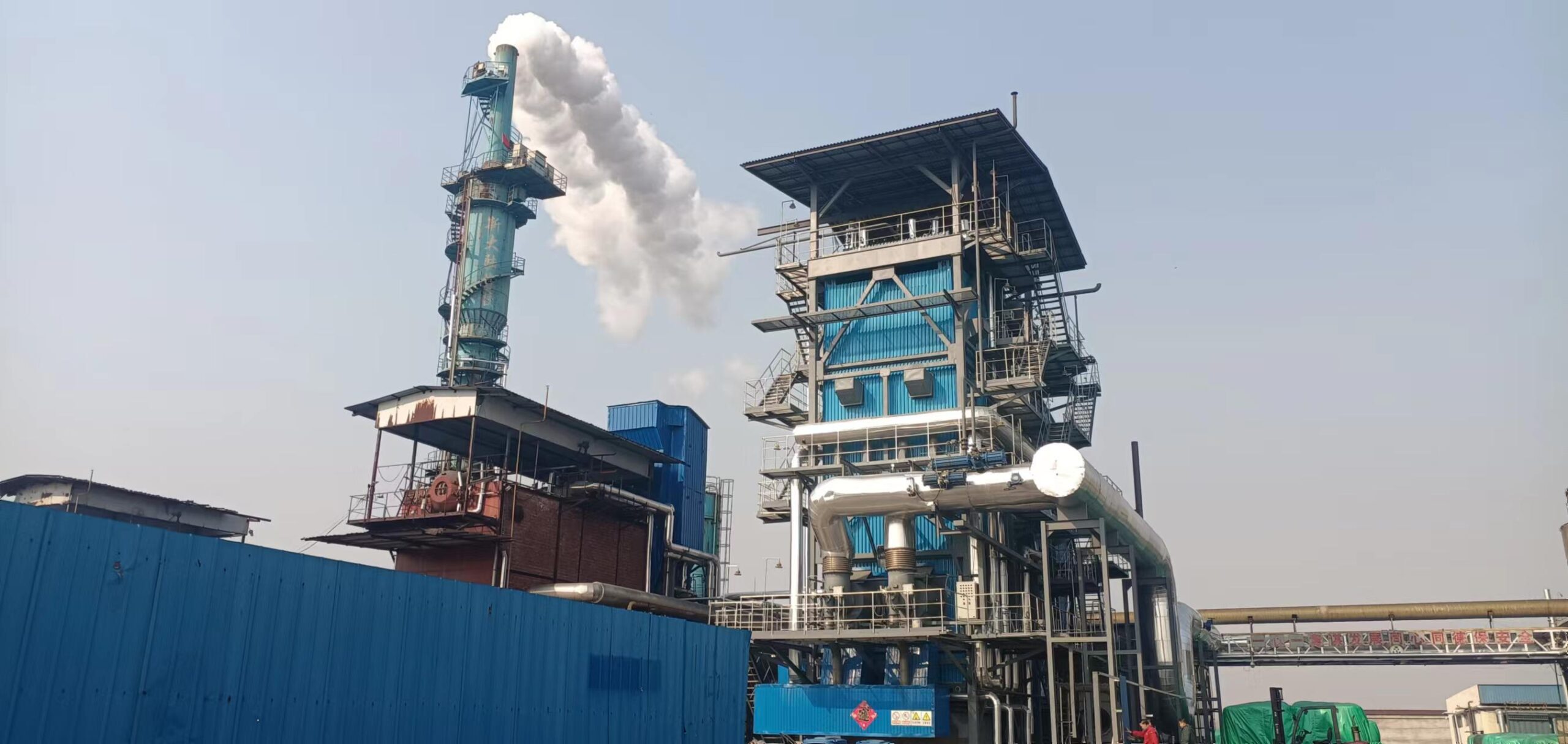
What Auxiliary Systems (e.g., Feedwater, Blowdown, Controls) Add to Installation Cost in Industrial Steam Boiler Projects?
When planning a new industrial steam boiler installation, it’s easy to focus solely on the cost of the boiler itself. But in practice, the boiler shell is just one part of a much larger system. Auxiliary systems—including feedwater preparation, blowdown handling, control panels, combustion air systems, flue gas stacks, and instrumentation—are all essential to achieving reliable, compliant, and efficient operation. Each of these systems contributes significantly to both upfront cost and long-term operability. Failing to budget accurately for these items leads to cost overruns, commissioning delays, and compliance risks.
Auxiliary systems such as feedwater preparation equipment, blowdown tanks, control systems, combustion air fans, and flue gas treatment can add 50–150% to the cost of the boiler unit itself. These systems are essential for proper boiler function and safety and typically represent 30–45% of the total installed cost. Accurate installation budgeting must include pumps, softeners, deaerators, instrumentation, panel wiring, vent stacks, and safety devices. Their sizing and complexity depend on boiler capacity, fuel type, and regulatory requirements.
Boilers don’t operate in isolation—and the cost of what surrounds the boiler often rivals the boiler itself.
Auxiliary systems such as feedwater, blowdown, and controls can double the installed cost of an industrial steam boiler.True
They include essential components required for safe, efficient, and compliant boiler operation, and must be budgeted accordingly.
🧰 Breakdown of Major Auxiliary Systems and Cost Ranges
| System | Function | Cost Estimate (USD) | % of Installed Cost |
|---|---|---|---|
| Feedwater System | Treats and supplies water to the boiler drum | $60,000 – $150,000 | 8–15% |
| – Deaerator | Removes dissolved gases | $20,000 – $60,000 | |
| – Feed Pumps (2× with VFDs) | Pressurizes water delivery | $15,000 – $40,000 | |
| – Water Softener/RO System | Prevents scale and corrosion | $10,000 – $30,000 | |
| – Make-up Tank/Condensate Tank | Stores return condensate and fresh water | $8,000 – $20,000 | |
| Blowdown System | Safely removes sludge and dissolved solids | $15,000 – $40,000 | 2–5% |
| – Blowdown Tank & Cooling Water | Handles high-temperature waste discharge | $10,000 – $25,000 | |
| – Piping, Valves, Interlocks | Supports surface and bottom blowdown flows | $5,000 – $15,000 | |
| Controls & Automation | Ensures safe and efficient operation | $30,000 – $80,000 | 5–10% |
| – Burner Management System (BMS) | Manages fuel flow, ignition, alarms | $10,000 – $30,000 | |
| – PLC/SCADA Interface | Operator dashboard and data logging | $15,000 – $40,000 | |
| – Sensors, Transmitters, Loops | Pressure, temperature, O₂, flow, drum level | $5,000 – $15,000 | |
| Flue Gas & Draft System | Exhausts combustion gases and controls draft | $25,000 – $60,000 | 5–8% |
| – ID Fan (induced draft) | Draws gases through boiler and stack | $10,000 – $30,000 | |
| – Stack/Chimney with Dampers | Releases gas at safe height, ensures backdraft control | $10,000 – $25,000 | |
| Electrical & Instrumentation | Wiring, MCCs, control panel integration | $20,000 – $50,000 | 3–7% |
For a 10 TPH boiler, these systems typically total $200,000–$400,000, often exceeding the cost of the boiler body.
📊 Auxiliary System Cost Contribution in Typical 10 TPH Project
| Component Group | Estimated Cost (USD) | Share of Total Cost (%) |
|---|---|---|
| Boiler Unit | $300,000 | ~35% |
| Auxiliary Systems (Total) | $350,000 | ~40% |
| Installation Labor | $180,000 | ~20% |
| Permits, Commissioning | $40,000 | ~5% |
| Total Turnkey Project Cost | $870,000 | 100% |
Auxiliary components like feedwater systems and controls account for nearly half the total cost in steam boiler projects.True
These systems are essential for functionality and compliance, and they often match or exceed the boiler’s base price.
🧪 Case Example: Cost Impact of Spec Enhancements
| Spec Change | Added Cost Estimate | Justification |
|---|---|---|
| Upgrade to PLC + touchscreen control | +$15,000 – $25,000 | Improves usability, reduces error |
| Add steam flowmeter & data logger | +$5,000 – $10,000 | Enables fuel benchmarking |
| Switch from manual to automatic blowdown | +$8,000 – $12,000 | Lowers heat losses, improves TDS control |
| Use dual feedwater pumps with VFDs | +$10,000 – $20,000 | Adds redundancy, efficiency |
| Include air preheater on stack | +$25,000 – $40,000 | Improves fuel efficiency 4–7% |
These upgrades improve long-term performance but must be accounted for in the initial project budget.
📋 Planning Tips for Auxiliary Systems Budgeting
| Tip | Resulting Benefit |
|---|---|
| Break down boiler scope by subsystem | Avoids “invisible costs” |
| Request itemized supplier quote | Improves clarity on extras or exclusions |
| Include freight and rigging costs | Critical for large auxiliaries |
| Budget 15–25% for contingencies | Covers unexpected auxiliary scope creep |
| Consult with MEP engineer early | Ensures system integration |
Summary
Auxiliary systems—like feedwater treatment, blowdown, controls, flue gas handling, and electrical integration—are indispensable to safe and efficient boiler operation, and they represent a significant portion of total installation cost. For industrial steam boilers, these systems routinely add $200,000 to $500,000 or more, depending on capacity and complexity. A realistic project budget must consider not just the boiler itself, but the network of supporting systems required to bring it online. In industrial projects, the rule is clear: the boiler is the engine, but the auxiliaries are what keep it running.
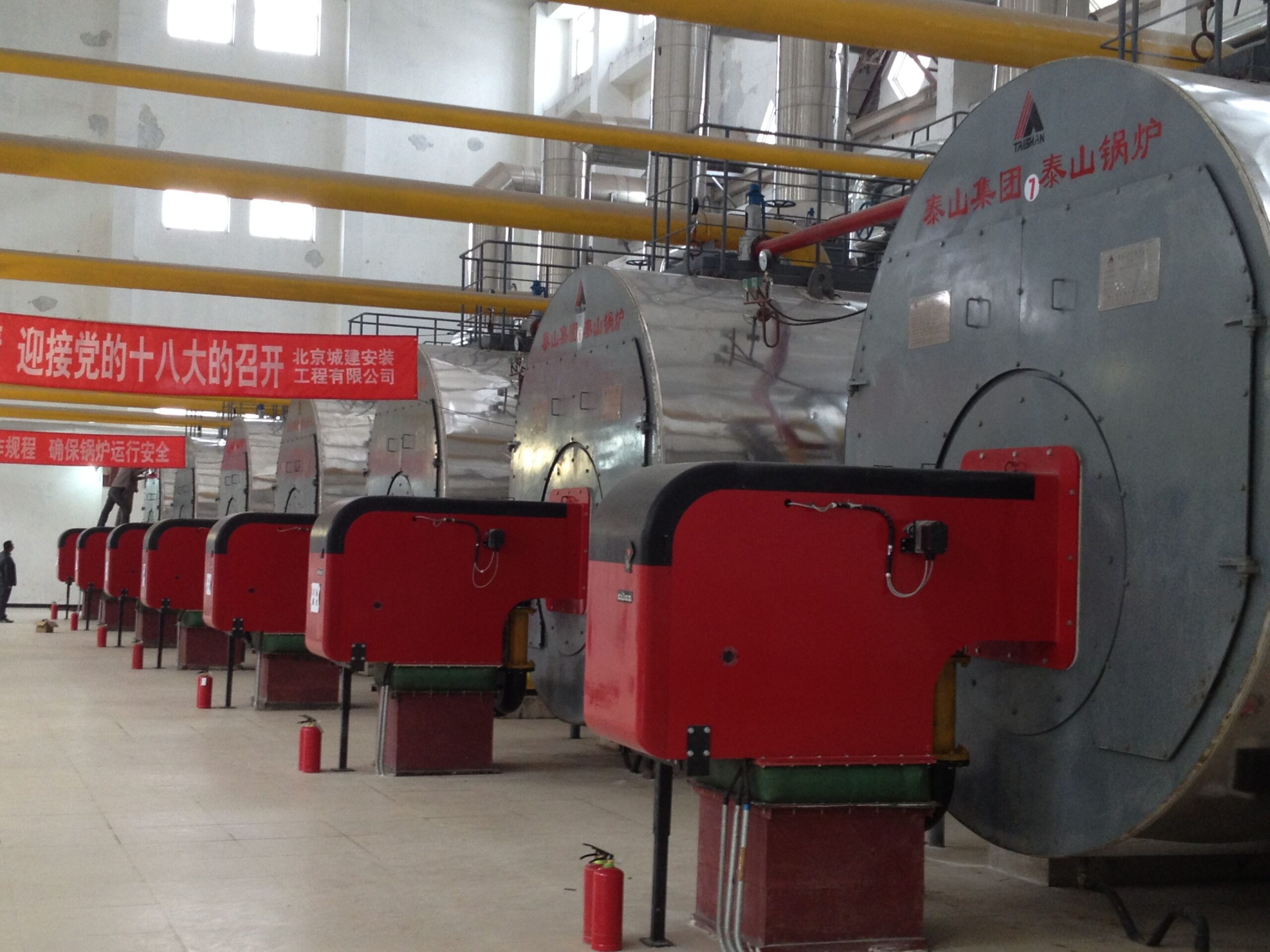
What Are the Long-Term Operating Costs, Including Energy/Fuel, Water, and Treatment Chemicals, for Industrial Steam Boilers?
An industrial steam boiler is not just a capital asset—it’s a fuel-hungry, water-intensive, chemically conditioned system that incurs substantial operating costs every hour it runs. Over the life of the boiler, long-term operational expenses far exceed the original purchase price, especially in oil-fired systems where fuel costs dominate. Proper budgeting and lifecycle cost modeling require a full accounting of energy consumption, water usage, and chemical treatment, which are directly influenced by boiler efficiency, operating hours, and maintenance practices. Failure to forecast these recurring expenses can lead to budget overruns, missed ROI targets, and premature system wear.
Long-term operating costs for industrial steam boilers include fuel or energy consumption, water and make-up water charges, treatment chemicals (softeners, oxygen scavengers, pH stabilizers), and related utilities such as power for pumps and fans. Over 20 years, these costs can exceed five to ten times the boiler’s original capital cost. In oil-fired systems, fuel typically represents 70–80% of the total OPEX, while water and chemical costs account for 3–8%. Accurate estimation of these costs is crucial for budgeting, efficiency planning, and lifecycle cost analysis (LCCA).
Steam isn’t free—and over time, operating inputs become the true cost of ownership.
Fuel, water, and chemical treatment costs make up the majority of long-term boiler operating expenses.True
Fuel alone typically represents over 70% of total lifecycle cost, with water and chemicals contributing another 5–10%.
🔥 1. Fuel/Energy Cost (Primary Operating Expense)
| Parameter | Value (Oil-Fired Boiler Example) |
|---|---|
| Boiler Size | 10 TPH (tons per hour) |
| Operating Hours/Year | 7,200 hours |
| Fuel Type | Light fuel oil (LFO) |
| Efficiency | 85% |
| Fuel Calorific Value | ~10,200 kcal/kg |
| Fuel Price | $800/ton |
🔹 Estimated Fuel Consumption:
Steam Demand × Enthalpy / (Efficiency × CV of Fuel)
= (10,000 kg/h × 665 kcal/kg × 7,200 h) ÷ (0.85 × 10,200)
≈ 5,465,000 kg/year ≈ 5,465 tons/year
🔹 Estimated Annual Fuel Cost:
5,465 tons × $800/ton = **$4.37 million/year**
For a 20-year boiler life, fuel cost = $87.4 million at constant price.
💧 2. Water & Make-Up Water Costs
| Input Type | Estimate per m³ | Annual Usage Estimate (10 TPH) |
|---|---|---|
| Feedwater (condensate + make-up) | $0.40–$1.00/m³ | 45,000 – 60,000 m³/year |
| City Water or Treated Supply | $0.70–$1.50/m³ | ~20–30% of feedwater volume |
🔹 Annual Water Cost Estimate:
~50,000 m³ × $0.80/m³ = **$40,000/year**
Excessive blowdown and leakage can raise this by 20–30%.
⚗️ 3. Water Treatment & Chemical Costs
| Chemical Type | Purpose | Annual Cost (Estimate) |
|---|---|---|
| Softening Salts/Resins | Prevent scale from hardness | $3,000 – $6,000 |
| Oxygen Scavengers | Prevent corrosion | $4,000 – $8,000 |
| pH Adjusters | Maintain alkaline conditions | $2,000 – $4,000 |
| Anti-foaming Agents | Prevent carryover in boiler drum | $1,500 – $3,000 |
| Condensate Corrosion Inhibitors | Protect return lines | $2,000 – $5,000 |
| Laboratory Testing/Monitoring | External water lab or sensors | $1,500 – $4,000 |
🔹 Total Annual Chemical Costs:
~$15,000 – $30,000/year
Costs vary based on blowdown rate, water source, and TDS control efficiency.
📊 Combined Annual Operating Cost Estimate (10 TPH Oil-Fired Boiler)
| Cost Category | Annual Cost (USD) | % of OPEX |
|---|---|---|
| Fuel | ~$4,370,000 | ~86–90% |
| Water Supply | ~$40,000 | ~0.8% |
| Chemicals | ~$20,000 | ~0.4% |
| Electricity (pumps/fans) | ~$50,000 – $70,000 | ~1–1.5% |
| Operator Labor | ~$60,000 – $100,000 | ~2–4% |
| Maintenance & Spare Parts | ~$60,000 – $90,000 | ~2–3% |
| Total Estimated OPEX | $4.6M – $4.7M/year | 100% |
Long-term boiler fuel and water treatment costs can exceed ten times the original system capital cost.True
These recurring operational expenses accumulate annually over the boiler’s life, dwarfing the initial CAPEX.
📉 20-Year Cost Projection (10 TPH Boiler, Constant Prices)
| Cost Element | Estimated Lifetime Cost |
|---|---|
| Fuel | ~$87 million |
| Water & Chemicals | ~$1.2 million |
| Electricity & Utilities | ~$1.2 million |
| Maintenance & Repairs | ~$1.4 million |
| Labor | ~$1.6 million |
| Total OPEX (20 yrs) | ~$92–95 million |
Compare to a capital cost of ~$900,000. Operating costs are >90× higher over 20 years.
📋 Tips for Managing Operating Cost Inflation
| Strategy | Impact |
|---|---|
| Improve boiler efficiency | Reduces fuel use per ton of steam |
| Install economizer | Cuts flue gas losses (fuel savings 5–10%) |
| Automate blowdown | Lowers water/chemical waste |
| Recover condensate | Reduces fresh water and chemical demand |
| Monitor fuel mix and calorific value | Ensures combustion consistency |
| Negotiate long-term fuel supply | Mitigates market volatility |
Summary
Long-term operating costs for industrial steam boilers—especially oil-fired units—are dominated by fuel consumption, but water and chemical treatment also represent ongoing financial commitments. Over a 20-year lifespan, operating expenses can exceed 90% of the boiler’s total lifecycle cost, making them the most important variable in financial planning. Facilities that track and optimize these recurring costs through efficiency upgrades, water reuse, and chemical management gain significant budgetary and operational advantages. In steam production, it’s not just what you burn—it’s what you keep from burning unnecessarily that saves you money.
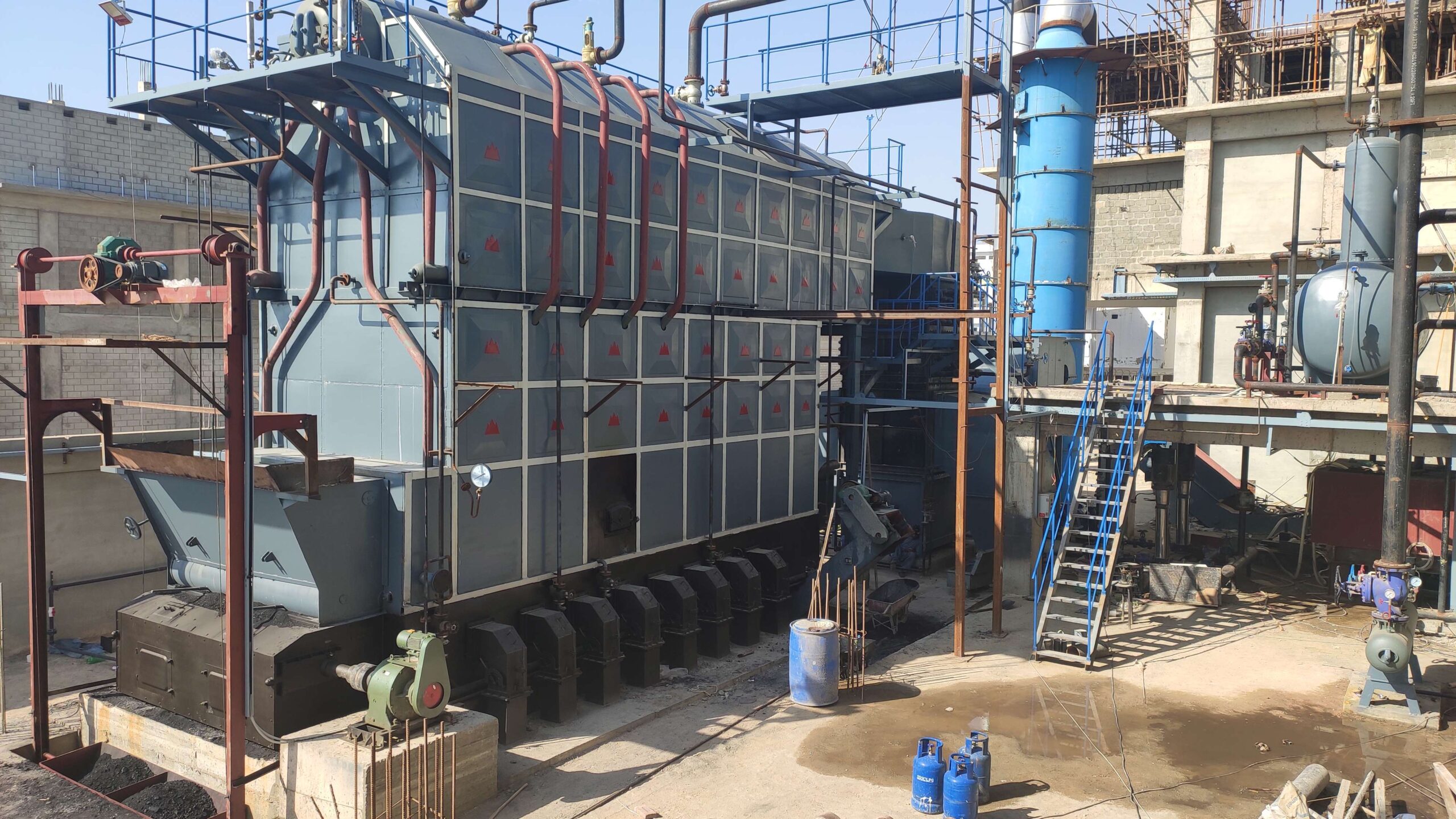
How Do Maintenance, Inspections, and Component Replacements Impact Lifecycle Cost?
An industrial steam boiler isn’t just a set-and-forget machine—it’s a complex pressure system exposed to heat, corrosion, vibration, and mechanical wear. Over a 15–30 year lifecycle, routine maintenance, inspections, and component replacements play a critical role in protecting performance, safety, and cost stability. Neglect these activities, and costs can skyrocket due to unplanned shutdowns, major repairs, and premature replacements. Plan and execute them properly, and the boiler delivers reliable steam at optimized fuel efficiency for decades. The difference? Often millions in lifecycle costs.
Maintenance, inspections, and component replacements significantly impact the lifecycle cost of an industrial steam boiler by influencing downtime frequency, fuel efficiency, component longevity, and repair expenses. Routine servicing prevents performance degradation, predictive inspections catch problems early, and timely part replacements avoid catastrophic failures. Over 20 years, poor maintenance can increase total cost of ownership (TCO) by 20–40%, while optimized maintenance can extend system life, reduce unplanned outages, and sustain energy efficiency.
A boiler’s cost over time is determined less by how it runs—and more by how well it’s maintained.
Neglecting maintenance and inspections in industrial boilers increases lifecycle cost by up to 40%.True
Inefficient operation, early component failure, and emergency downtime inflate long-term operating and repair costs.
🧰 Key Maintenance and Inspection Activities
| Task | Purpose | Frequency |
|---|---|---|
| Burner inspection & tuning | Optimize combustion and fuel-air ratio | Quarterly |
| Tube cleaning & descaling | Maintain heat transfer efficiency | Monthly to quarterly |
| Water treatment check | Prevent corrosion and scaling | Weekly/monthly |
| Safety valve testing | Ensure pressure relief system works | Annually |
| Boiler control calibration | Ensure accurate readings and interlocks | Quarterly |
| Ultrasonic tube inspection | Detect early wall thinning | 1–2 years |
| Pump & fan motor service | Avoid bearing failure and vibration | Quarterly to yearly |
A disciplined O&M schedule can extend boiler life by 5–10 years and maintain fuel savings of 3–7%.
📊 Lifecycle Cost Comparison: Maintained vs. Neglected System (20-Year Model, 10 TPH Oil-Fired Boiler)
| Cost Element | Well-Maintained Unit | Poorly Maintained Unit |
|---|---|---|
| Fuel Cost | $87 million | $91 million (+5%) |
| Water & Chemicals | $1.2 million | $1.5 million (+25%) |
| Maintenance & Replacements | $1.4 million | $2.8 million (+100%) |
| Unplanned Downtime Loss | $0.5 million | $2.0 million (+300%) |
| Component Failures | $150,000 | $750,000 (burner, tubes) |
| Total Lifecycle Cost | $90.3 million | $98.0 million |
Deferred maintenance may seem cheaper short-term—but raises lifecycle cost by $7.7 million over 20 years.
🔧 High-Impact Components & Replacement Costs
| Component | Typical Lifespan | Replacement Cost (USD) | Lifecycle Impact if Ignored |
|---|---|---|---|
| Burner Nozzle Assembly | 3–5 years | $10,000 – $25,000 | Fuel wastage, incomplete burn |
| Fire Tubes or Water Tubes | 10–15 years | $60,000 – $120,000 | Overheating, rupture risk |
| Pump/Motor Units | 8–10 years | $15,000 – $30,000 | Feedwater loss, system trip |
| Control PLC System | 10–12 years | $20,000 – $40,000 | Operational drift, false trips |
| Economizer | 15–20 years | $50,000 – $100,000 | Fuel loss via flue gases |
Tracking component age and proactively scheduling replacements can prevent failures that cost 3–10× more.
📋 Maintenance Strategy Types and Cost Impacts
| Strategy Type | Description | Lifecycle Cost Effect |
|---|---|---|
| Reactive (Break/Fix) | Only fix when failure occurs | High costs, low reliability |
| Preventive (Fixed Schedule) | Regular maintenance at fixed intervals | Moderate cost, improved uptime |
| Predictive (Data-Driven) | Uses condition monitoring (vibration, temp, sensors) | Highest savings, longest life |
| Reliability-Centered Maintenance (RCM) | Custom strategy based on criticality | Optimized lifecycle planning |
Plants using predictive or RCM strategies often save 15–25% in lifecycle cost over basic reactive models.
📈 Fuel Efficiency and Maintenance Link
| Maintenance Status | Stack Temp (°C) | Fuel Efficiency (%) | Fuel Cost Impact |
|---|---|---|---|
| Clean tubes, tuned burner | 180°C | 88% | Baseline |
| Soot-fouled tubes | 240°C | 83% | +5% fuel cost |
| Poorly tuned burner | 260°C | 80% | +8–10% fuel cost |
A 20°C drop in flue gas temperature = ~1% gain in efficiency, saving $50,000–$100,000/year.
Consistent tube cleaning and burner tuning can improve fuel efficiency by 3–7% over time.True
Clean surfaces and optimized combustion reduce fuel use and improve heat transfer performance.
Summary
Maintenance, inspections, and timely component replacements are not optional costs—they’re strategic investments that directly influence the lifecycle cost of industrial steam boilers. Well-maintained systems run more efficiently, last longer, and suffer fewer catastrophic failures. Poorly maintained systems cost more in fuel, downtime, repairs, and premature replacement. Over a 20-year period, disciplined O&M can cut millions from total cost of ownership (TCO). In steam boiler economics, the cheapest problem to solve is the one that never happens—because you prevented it.
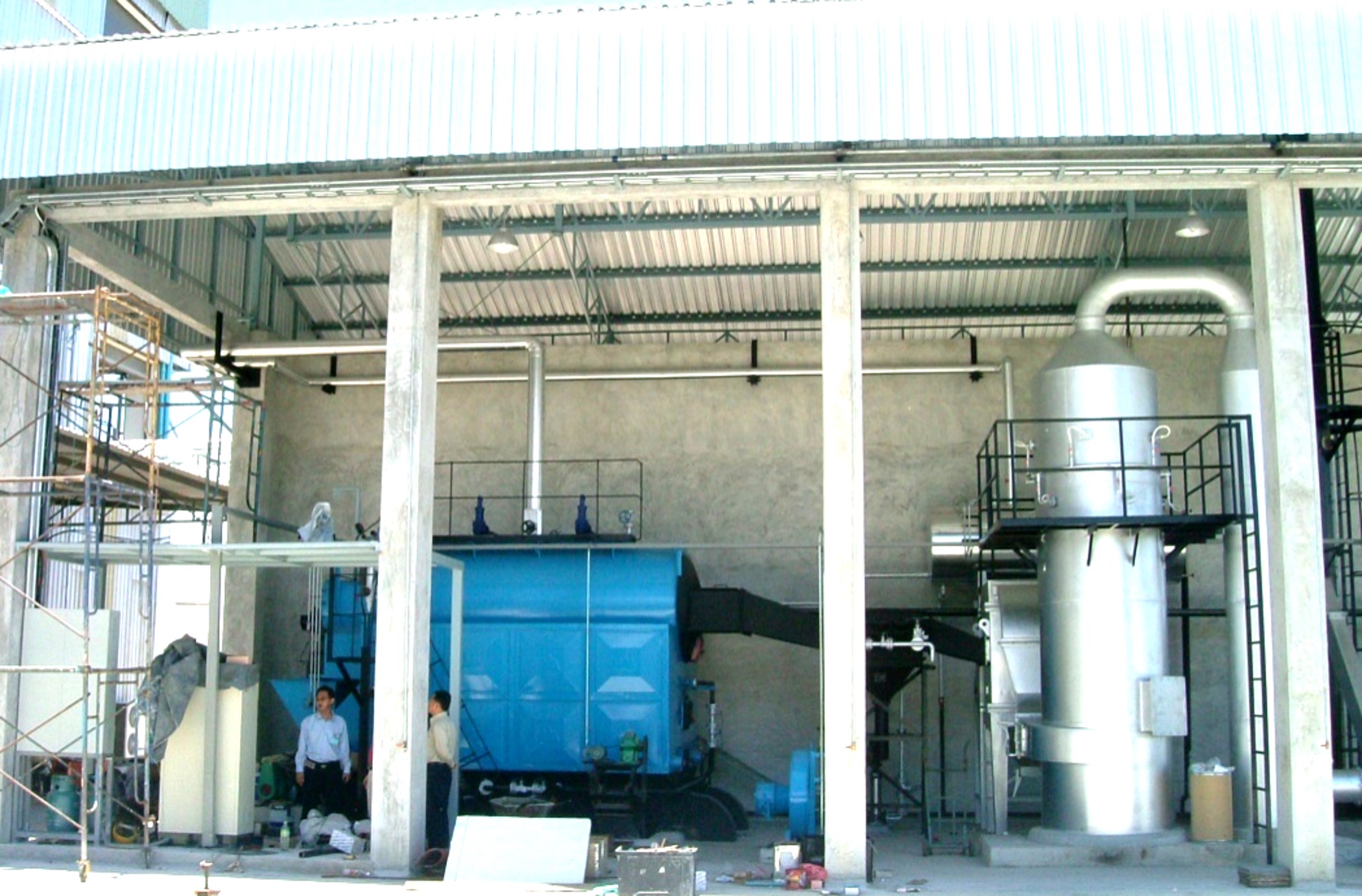
What Role Do Emissions Controls and Environmental Compliance Play in Long-Term Budgeting?
In modern industrial operations, especially those involving steam boilers, environmental regulations have become as financially significant as energy costs. With governments worldwide enforcing stricter air quality and climate standards, industrial facilities are increasingly required to adopt emissions controls and ensure full compliance with environmental legislation. For steam boilers—particularly those firing fossil fuels like oil—the cost of emissions control systems, emissions monitoring, and carbon pricing mechanisms directly affects the long-term operating budget and total cost of ownership (TCO). Failing to plan for these costs can lead to non-compliance penalties, unexpected capital expenditures, or even operational shutdowns.
Emissions controls and environmental compliance play a critical role in long-term budgeting for industrial steam boilers by introducing both upfront capital costs and ongoing operational expenses. These include the installation and maintenance of control equipment (like scrubbers and CEMS), compliance reporting, stack testing, and costs associated with emissions taxes or carbon pricing schemes. Over 20–30 years, these compliance-related expenses can account for 5–15% of a boiler system’s lifecycle cost and must be integrated into total cost of ownership and investment planning to avoid regulatory risks and financial shortfalls.
Environmental compliance isn’t just a box to check—it’s a strategic cost category with significant financial consequences.
Emissions control and compliance costs are essential components of industrial steam boiler budgeting.True
They include capital investments, operating costs, and risk mitigation expenses that directly affect long-term financial planning.
📦 Typical Emissions Control Systems and Their Cost Impact
| Control Technology | Target Pollutant(s) | Estimated CAPEX (USD) | Annual O&M Cost (USD) |
|---|---|---|---|
| Wet Scrubber | SO₂, PM (particulates) | $150,000–$300,000 | $10,000–$40,000 |
| SCR (Selective Catalytic Reduction) | NOₓ | $200,000–$500,000 | $15,000–$50,000 |
| FGR (Flue Gas Recirculation) | NOₓ | $50,000–$120,000 | $5,000–$15,000 |
| Baghouse/Dust Collector | Particulates (PM) | $60,000–$150,000 | $5,000–$20,000 |
| CEMS (Continuous Emissions Monitoring System) | CO, NOₓ, SO₂ | $30,000–$90,000 | $4,000–$12,000 |
These systems may be required individually or in combination depending on local environmental laws.
📊 Long-Term Compliance Cost Breakdown (20-Year Model, Oil-Fired Steam Boiler)
| Compliance Category | Estimated Lifetime Cost (USD) |
|---|---|
| Emissions Control Equipment (CAPEX) | $250,000 – $700,000 |
| Annual Maintenance & Operation | $10,000 – $50,000/year |
| Emissions Testing & Stack Monitoring | $2,000 – $5,000/year |
| Permits, Licensing & Reports | $1,000 – $10,000/year |
| Carbon Taxes (if applicable) | $10 – $50 per ton CO₂ |
| Non-Compliance Penalties (Risk) | $50,000+ per violation |
| Total Compliance Cost (20 years) | $600,000 – $1.5 million |
These costs typically increase over time as regulations become stricter and carbon pricing expands.
🧪 Case Study: 10 TPH Oil-Fired Boiler in Regulated Market
| Parameter | Value |
|---|---|
| Annual Oil Consumption | ~5,500 tons |
| CO₂ Emission Factor (oil) | 3.15 tons CO₂/ton fuel |
| Total CO₂ Emissions/Year | ~17,325 tons |
| Carbon Price (avg.) | $35/ton CO₂ |
| Annual Carbon Cost | $606,375 |
| CEMS Operation & Compliance Cost | $18,000/year |
| Total Annual Compliance Cost | ~$625,000 |
| 20-Year Compliance Budget | ~$12.5 million |
Carbon taxes and emission monitoring can cost more over 20 years than the boiler’s initial purchase price.True
Long-term environmental costs accumulate annually and must be included in total cost of ownership (TCO) planning.
📋 Key Environmental Regulations That Influence Budgeting
| Regulation Type | Financial Impact |
|---|---|
| Air Emission Permits (EPA, local) | Annual fees and reporting costs |
| NOₓ/SO₂ Limits (Clean Air Acts) | Mandate scrubbers, FGR, or low-NOx burners |
| CO₂ Cap-and-Trade / Carbon Tax | Adds cost per unit of fuel burned |
| Boiler MACT (Maximum Achievable Control Technology) | Requires ongoing compliance investment |
| Periodic Stack Testing | Testing every 1–3 years (~$3,000–$5,000/test) |
Early adoption of efficient and low-emission technologies can reduce long-term compliance liabilities.
📈 Emissions Cost Sensitivity (Based on Fuel Type)
| Fuel Type | CO₂ Emission Factor (kg/MMBtu) | CO₂ Cost Impact (per 10,000 hrs/year @ $35/ton) |
|---|---|---|
| Natural Gas | ~53 | ~$325,000/year |
| Light Fuel Oil | ~74 | ~$450,000/year |
| Coal | ~95 | ~$600,000/year |
Switching to cleaner fuels or higher-efficiency boilers can cut emissions-related costs by 20–40%.
💡 Strategies to Control Emissions Costs
| Strategy | Financial Benefit |
|---|---|
| Install higher-efficiency boilers | Reduces fuel use and CO₂ output |
| Use oxygen trim and burner tuning | Optimizes combustion, lowers NOₓ |
| Recover flue gas heat | Lowers stack losses, reduces fuel per ton steam |
| Blend with biofuels | Potentially qualifies for carbon credit offset |
| Upgrade early for upcoming rules | Avoids retrofit premiums and non-compliance |
Early investment in emissions reduction can save millions in avoided penalties and carbon fees.
Summary
Emissions controls and environmental compliance are no longer optional considerations—they’re critical financial inputs in the lifecycle planning of industrial steam boilers. Over two or three decades, their impact on budgeting can be as large as maintenance and even rival fuel costs, particularly in regulated regions or carbon-priced markets. Ignoring them risks financial penalties, operational shutdowns, and long-term cost escalation. Smart plant operators and CFOs treat emissions as a measurable cost center, proactively investing in controls, high-efficiency systems, and clean fuel strategies to stay ahead. In industrial boiler economics, compliance is the new cost of doing business—and doing it wisely pays off.
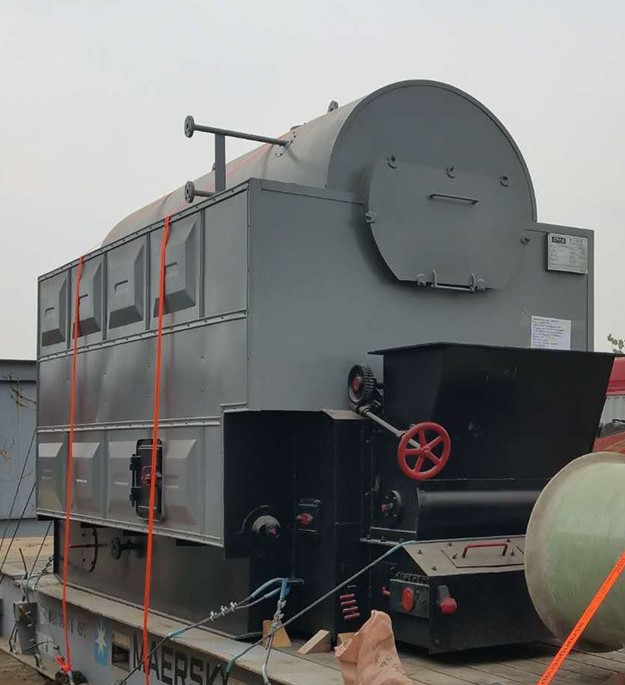
How Can TCO (Total Cost of Ownership) and ROI Be Calculated for a Steam Boiler Investment?
Investing in a new industrial steam boiler—whether to upgrade capacity, improve efficiency, or meet emissions regulations—is not just an engineering decision; it’s a long-term financial commitment. The purchase price is only a fraction of the total financial impact. That’s why understanding and calculating TCO (Total Cost of Ownership) and ROI (Return on Investment) is critical to choosing the right boiler. These financial models help stakeholders evaluate long-term cost-effectiveness, justify capital outlay, and compare alternatives over a boiler’s entire operational lifespan.
To calculate TCO for a steam boiler, add all costs associated with ownership over its lifecycle, including capital expenditure (CAPEX), fuel, maintenance, water treatment, labor, emissions compliance, and decommissioning. ROI is calculated by comparing the net financial gains (e.g., fuel savings or reduced maintenance) from the boiler investment to the upfront capital cost. Together, TCO and ROI allow decision-makers to assess both total cost burden and investment return, enabling smarter procurement and financial planning.
Without these calculations, you’re only seeing part of the financial picture.
TCO and ROI calculations help determine whether a boiler investment will deliver financial value over its lifecycle.True
They incorporate all operating, maintenance, and compliance costs, along with expected returns, to evaluate true investment performance.
📘 How to Calculate Total Cost of Ownership (TCO)
✅ TCO Formula for Steam Boilers:
TCO = CAPEX + ∑ (Fuel Cost + Maintenance + Labor + Water + Chemicals + Emissions + Downtime + Decommissioning)
| TCO Cost Components | What’s Included |
|---|---|
| CAPEX | Boiler, burner, controls, installation |
| Fuel Costs | Long-term fuel usage × price escalation |
| Maintenance & Repairs | Routine service, part replacement |
| Operator Labor | Staffing, training, certifications |
| Water & Chemicals | Softening, treatment, RO systems |
| Emissions & Compliance | Scrubbers, CEMS, CO₂ tax, permit fees |
| Unplanned Downtime | Lost revenue or penalties |
| Decommissioning | Site cleanup, removal, residual value |
🧪 TCO Example: 10 TPH Oil-Fired Steam Boiler (20-Year Model)
| Category | Cost Estimate (USD) |
|---|---|
| Initial CAPEX | $850,000 |
| Fuel (20 yrs @ $800/ton) | ~$87,000,000 |
| Maintenance & Spares | ~$1,600,000 |
| Labor | ~$1,800,000 |
| Water & Chemicals | ~$1,200,000 |
| Compliance Costs | ~$1,600,000 |
| Downtime/Unexpected Repairs | ~$750,000 |
| Decommissioning | ~$200,000 |
| Total TCO (20 Years) | ~$95 million |
Fuel dominates the TCO—every 1% gain in efficiency can save $800,000 – $1.5 million over 20 years.
📈 How to Calculate Return on Investment (ROI)
✅ Basic ROI Formula:
ROI (%) = [(Net Savings from Investment) ÷ Initial Investment] × 100
Net Savings = Fuel savings, O&M savings, emissions credits
Initial Investment = CAPEX or price difference between options
🔹 ROI Example: Upgrading to High-Efficiency Boiler
| Scenario | Value |
|---|---|
| CAPEX (Standard Unit) | $750,000 |
| CAPEX (High-Efficiency Unit) | $900,000 |
| Annual Fuel Savings | $90,000 |
| Net Savings Over 20 Years | $1,800,000 |
| Extra CAPEX | $150,000 |
ROI = ($1.8M – $150K) ÷ $150K × 100 = **1,100%**
A well-optimized investment pays back many times over its cost.
⏳ How to Calculate Payback Period
✅ Formula:
Payback Period = Initial Investment / Annual Net Savings
Using the example above:
Payback = $150,000 / $90,000 = **1.67 years**
Fast payback = low financial risk.
📊 TCO & ROI Comparison Table: Standard vs. Efficient Boiler (10 TPH)
| Attribute | Standard Boiler | High-Efficiency Boiler |
|---|---|---|
| CAPEX | $750,000 | $900,000 |
| Efficiency | 83% | 89% |
| 20-Year Fuel Cost | $91M | $85M |
| Maintenance Cost | $1.6M | $1.4M |
| Emissions Cost | $1.8M | $1.5M |
| Total TCO | $96.95M | $90.6M |
| ROI | — | 1,100% |
| Payback Period | — | ~1.7 years |
Upgrading to a higher-efficiency boiler with modest capital premium often yields a payback under 3 years and strong ROI.True
Fuel savings alone typically offset the cost differential in a short period, making high-efficiency systems financially superior.
📋 Tools & Tips for TCO and ROI Calculation
| Tool/Tip | Benefit |
|---|---|
| Use Excel with cash flow tables | Simple, flexible, transparent |
| Include a discount rate (4–6%) | Improves realism via present value logic |
| Model best/worst-case scenarios | Prepares for volatility in fuel, usage |
| Consult both finance and engineering teams | Combines cost and technical insights |
| Integrate LCCA with procurement process | Supports capital approval decisions |
Summary
Total Cost of Ownership (TCO) and Return on Investment (ROI) are essential tools for evaluating long-term value versus upfront cost in industrial steam boiler projects. While the boiler’s purchase price is just the beginning, its fuel consumption, maintenance needs, emissions compliance, and operating costs drive its financial impact for decades. Proper TCO and ROI modeling helps plant owners avoid false economies and identify the solution that delivers sustainable performance, reliability, and profit. For steam boiler investments, the smartest decision is always the one backed by full-cost financial foresight.
🔍 Conclusion
The true cost of an industrial steam boiler extends far beyond the purchase price. While upfront expenses like equipment and installation are substantial, fuel usage, maintenance, and compliance represent the largest long-term costs. A full lifecycle cost analysis allows you to assess the true value, efficiency, and profitability of your boiler investment—helping you select a solution that delivers long-term savings and operational resilience.
📞 Contact Us
💡 Need help estimating the total cost of your steam boiler system? Our team provides TCO analysis, cost modeling, and system planning for industrial steam boiler projects of all sizes.
🔹 Contact us today and make a smart, cost-effective steam boiler investment that supports your production goals! ♨️💼📉
FAQ
What is the average upfront cost of an industrial steam boiler?
Upfront costs vary widely based on capacity, pressure rating, fuel type, and automation level, typically ranging from $50,000 to $500,000+. Installation can add $30,000–$200,000, covering structural, piping, and control system setup.
What are the ongoing fuel costs for a steam boiler?
Fuel is the largest recurring cost. Annual expenses depend on boiler size, efficiency, and run time:
Natural gas: $6–$12/MMBtu
Fuel oil: $3–$4/gallon
Biomass: $30–$100/ton
A medium-sized steam boiler operating continuously can incur $200,000 to $1M+ per year in fuel costs.
How much does maintenance cost over the boiler’s life?
Annual maintenance—including cleaning, inspection, and repairs—typically runs 3–6% of the capital cost. Over a 20–25 year lifespan, total maintenance costs can range from $100,000 to $500,000 or more, depending on system complexity.
What hidden or indirect costs should be considered?
Emissions compliance (SCR, FGR, low-NOx burners)
Water treatment systems (softeners, deaerators, chemical dosing)
Boiler operator training and certification
Downtime and production losses during outages
End-of-life decommissioning and replacement
How do steam boilers compare in total cost of ownership (TCO)?
Steam boilers have moderate to high capital costs and significant fuel consumption, but provide critical process heat in many industries. Systems with high efficiency, advanced controls, and heat recovery units offer better ROI and lower TCO over 20+ years.
References
Steam Boiler Capital and Operating Cost Guide – https://www.energy.gov
Industrial Boiler Fuel Cost Comparisons – https://www.eia.gov
Lifecycle Cost Estimation for Steam Systems – https://www.researchgate.net
Boiler Installation and Commissioning Costs – https://www.sciencedirect.com
Steam Boiler Maintenance Requirements – https://www.epa.gov
Efficiency Trends in Steam Generation – https://www.bioenergyconsult.com
Industrial Boiler Compliance and Water Treatment Costs – https://www.mdpi.com
IEA Industrial Boiler Cost Studies – https://www.iea.org
Boiler Operator Training Programs and Cost – https://www.energysavingtrust.org.uk
ASME Guidelines for Steam Boiler Costing – https://www.asme.org

